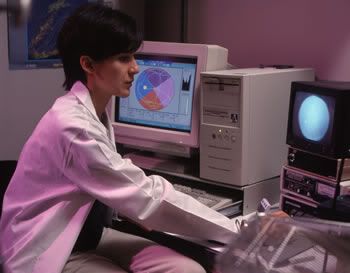Presentation, Natural History, and Management of Carotid Cavernous Aneurysms.
Although the risk of life-threatening or permanent neurological complications from carotid cavernous aneurysms (CCA) is low, neuro-ophthalmic morbidity and pain caused by CCAs are common and often lead to consideration of treatment. To assess the potential benefits of treatment of CCAs, one has to examine not only the outcome of treatment, as did the analysis by van der Schaaf et al., but also the natural history in patients with milder or episodic symptoms that may not necessitate treatment. In addition to considering symptomatic CCAs, an increasing number of such aneurysms are discovered incidentally, typically when evaluating another intracranial aneurysm, leading to a further therapeutic dilemma.
DISCUSSION
Neuro-ophthalmological manifestations are the most common reason for treatment in cases of CCA. The risk for subarachnoid hemorrhage and for other major neurological morbidity has been shown to be low so that guidelines for evidence-based treatment recommendations require an understanding of the varied clinical course and outcome of neuro-ophthalmological signs and symptoms. Previous reports focused mainly on the rate of major complications and on anatomic success of CCA closure but did not address the outcome of the patients’ symptoms and visual disability, which can pose significant functional difficulties.
The study published by Goldenberg-Cohen et al. reported that none of their 10 patients followed without intervention enjoyed spontaneous improvement of symptoms. In our series, with a larger number of patients, diplopia improved or became unnoticed in 39 (56%) of the 70 untreated CCAs that presented with diplopia. Furthermore, in our series, of the patients treated with analgesics without intervention, pain resolved in 31 of 55 (56%). Our two groups of either treated or untreated patients with CCAs are not directly comparable because they were selected initially according to severity of symptoms. Nevertheless, this study details the neuro-ophthalmologic outcome of a large cohort of untreated patients compared with a group selected for treatment and analyses outcome after intervention after adjusting for initial symptoms.
Pain resolved or improved in the majority of treated patients even after adjusting for initial severity of pain. Despite this, one must consider that many patients presented with only mild or intermittent pain, which spontaneously resolved or improved in 56% in the group of patients selected for follow-up without intervention. Of the two patients referred for treatment later in the course of follow-up due to worsening pattern or new pain, one continued to suffer retro-orbital pain for a full year despite successful endovascular closure of her CCA. Significant or constant moderate to severe pain was considered to be an indication for treatment. Such pain resolved or improved in 96% of patients after treatment.
Treatment did not significantly alter the patients’ final diplopia after adjusting for their initial diplopia. Although functional disability from diplopia is common in patients with CCAs, and endovascular treatment is often recommended, we noted that 26% of patients with ocular misalignment did not have subjective diplopia at presentation, and by the end of follow-up, 44% of untreated CCAs had no symptoms despite continued ocular misalignment. Unnoticed misalignment resulted in some patients forming adaptive head positioning, or central suppression of the second image, whereas in others, visual loss from ocular disease in one eye prevented diplopia. Although these patients lacked binocular vision, few had complaints. It would be worthwhile to test those activities that require binocular vision, such as driving, parking, or pouring liquids into a glass. Significant visual loss from compression of the intracranial optic nerve occurred in 5% in the untreated group, possibly preventable had the CCA been treated earlier in the course of the disease. Compressive optic neuropathy with progressive visual loss should be one indication for treatment consideration of a CCA.
Cerebral infarct occurred in 4% of treated patients with CCAs after treatment and in 2% of CCAs without intervention. In the treated group, all stroke cases occurred before 1993 during deconstructive endovascular procedures aimed at ICA closure. The rate of complications in our series is comparable with that published by Bavinski et al. There were no deaths nor arterial epistaxis in either group, confirming the low risk for neurological complications in patients followed without intervention. In our series, the number of patients treated by GDC as compared with balloon embolization did not permit comparative statistical analyses, but it appears that a lower incidence of stroke appears to occur after GDC, as compared with balloon remobilization. In their review of the literature, van der Schaaf et al. reported ischemic complications in 1.6% within 24 hours and late ischemic complications in 3.4% after treatment with detachable balloons. In their review, none of the patients treated by embolization with detachable coils suffered any complications, although the rate of complete aneurysm occlusion was lower than those treated by detachable balloon. In our series, one patient who underwent coiling of her CCA did suffer transient ischemia with dysphasia and hemiparesis.
Of epidemiological interest is the fact that 92% of patients in this series of 185 patients with CCAs were female. A similar striking 85% female preponderance was also noted in a series of 167 saccular vertebral and posterior inferior cerebellar artery aneurysms reported by Drake and et al. In addition, all of the cases with bilateral CCAs were women.
Observing the complication rate and the outcome in treated and in untreated patients with CCAs provides the framework for considering the best management. Our findings support the guidelines by which, for patients with mild, nondebilitating symptoms and for those with incidentally found CCAs, follow-up without intervention should be strongly considered. Future guidelines for endovascular treatment of patients with CCAs must rely on such data.
CONCLUSION
The two groups of treated and untreated patients are not comparable because their selection was biased according to severity of symptoms. Because the risk for major neurological complications from endovascular treatment of aneurysms, even in experienced hands, is in the range of 5 to 9%, the indications for treatment should be carefully considered in each individual case. The results of this study underscore our approach, indicating treatment only in cases of debilitating pain, visual loss from compression or diplopia in primary gaze, or with risk factors for major complications such as pre-existing coagulopathy or sphenoid sinus erosion.




0 Comments:
Post a Comment
<< Home